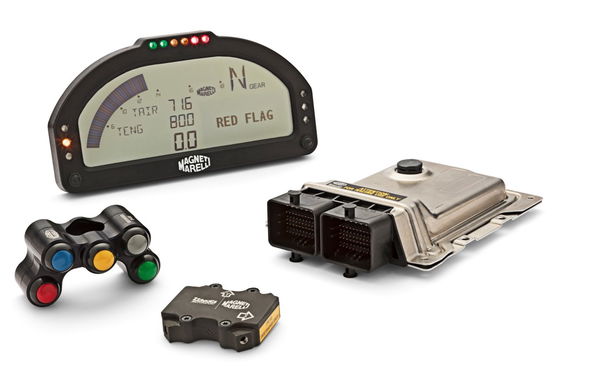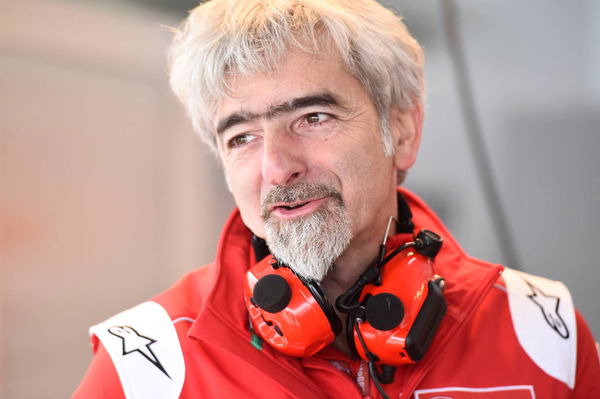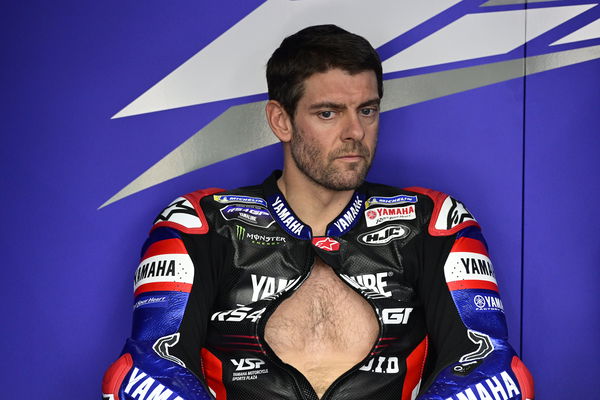Moto2: 2019 ECU explained, no traction control
'Traction control is one of the most famous and effective strategies but unfortunately it's one of the most difficult to tune'

Moto2 will have a proper racing ECU, derived from Magneti Marelli's MotoGP unit, to coincide with the switch from Honda to Triumph engines in 2019.
On Monday at Valencia, the initial electronic features that will be available for the Moto2 riders were confirmed as torque maps, engine braking and launch control.
But as rumoured, the most well-known electronic rider aid, traction control, will not be present.
"Traction control will not be introduced for next season," said MotoGP Director of Technology Corrado Cecchinelli. "It doesn't mean it won't be in the future.
"It's one of the strategies that we could introduce at some time if needed, which means if it's needed on track and if it's needed in the rider training process, because it's one more thing to learn before moving up [to MotoGP].
"We didn't introduce it at the beginning because we count on rideability and proper engine tuning to make it properly rideable and not wanting to add too much complication from the beginning.
"Because traction control is one of the most famous and effective strategies but unfortunately it's one of the most difficult to tune. So we tried to start without it and we think it makes sense."
Cecchinelli explained that the overall target was to locate Moto2 more equally between Moto3 and MotoGP in terms of technical level, while being careful not to lose the best existing elements of the class.
"This series has proven to have some contents that we have to be very concerned about not losing. Like fair racing, a good show and something that is very important to us, which I would call 'low budget sensitivity'," Cecchinelli said. "That means we have to be very careful not to build a category where if a huge spender comes in, they win from the beginning.
"These are all the things we don’t want to lose in Moto2, but there's a lot to gain from the perspective of taking the chance of having this new engine to add another technical value to this championship.
"This [765cc Triumph] engine is better - smaller, lighter, more powerful, more torquey, which hopefully means more rideable - so yes we expect some performance improvement but I want to insist that this is not exactly the goal, because we don’t have actually a problem of performance.
"What we are looking for is to take the chance with this new engine to take a step in technical contents and overall level of the championship. So that in the end it will be more in line - on one side with Moto3 and on the other side with MotoGP - which to my perspective we are not perfect in this respect at the moment."
The key to the new electronic features is the ride-by-wire technology, linking the throttle and engine.
"One very important technical feature of the engine, or powerplant, is the ride-by-wire because this is what in the Triumph engine really helps us to make a step in the technology content of the series. Because it introduces different concepts of torque management and things you can do," Cecchinelli said.
"For the first time in Moto2 the technical staff and the riders – if you imagine the progress between Moto3, Moto2 and MotoGP – this is the place where they will learn from now on that there is the chance to have the engine do what you like.
"You can deliver the torque in a way that you like, rather than the natural delivery, by using the torque maps, which is basically the connection between the rider demand and engine delivery. This is a huge point to me.
"To this we added a number of other contents because we took the chance to introduce a proper racing control management.
"We have a proper racing ECU, Inertial platform and we are introducing some of what we call 'chassis control' strategies from the beginning like launch control, proper engine brake strategy, torque maps."
However to avoid the complexity and cost associated with tuning such electronics in MotoGP, many of the features will basically have a number of pre-set tuning levels to chose from in Moto2.
The electronics settings chosen will remain the same over the entire lap, rather than adjust corner-by-corner, as occurs in MotoGP.
"All these [chassis control strategies] are something more than Moto3, but they will delivered in an easier format than MotoGP," Cecchinelli said. "We will deliver the strategies with the big part already pre-set by us, in what we consider is the best tuning possible.
"So the engine brake or torque control strategies are the same strategies we have in MotoGP, but a big number of parameters will be locked and sealed by us so you will have the same refinement and level, but much less parameters will be open to the teams.
"So no [extra] engineers will be needed to make this system run, but it will run properly and everybody will be aware of what is possible in the concept that they will one day move up to MotoGP."
Cecchinelli admitted it hadn't been easy to juggle the level of technical complexity with cost, but feels they have found a good balance.
"This is a point where we really struggled; finding the right balance between added value and added cost. We don't want this category to become too budget sensitive, but we would like it to have more technical content," he said.
"So, yes, in general complexity brings costs. But we tried to make a sensible plan, also by introducing other additional strategies in future years.
"Because if you are a present Moto2 electronic guy you are probably able to handle some of the strategies and base package at the beginning, not everything at the same time. So this is one other reason why we tried to restrain to a reasonable package with the idea that it is possible to introduce something [more] in the future.
"I think that whoever is handling Moto2 [as an engineer] today will be able to do that tomorrow, but by learning something in the process. So I don’t think teams will need extra resources, but I think in the end they will end up with better trained technicians."
The race-spec 765cc Triumph engine and Magneti Marelli ECU will make their official debut at Jerez at the end of this week.
"We're very pleased to say that we have an engine that's reliable, extremely consistent and is producing 140PS," said Triumph chief engineer Stuart Wood.
"So that's a good step and a step for the championship, but more than that you've got a completely different torque delivery with much more torque through the whole rev range. That's the character of the triple, that's the character of Triumph and that's what we think will make this as exciting as possible."











